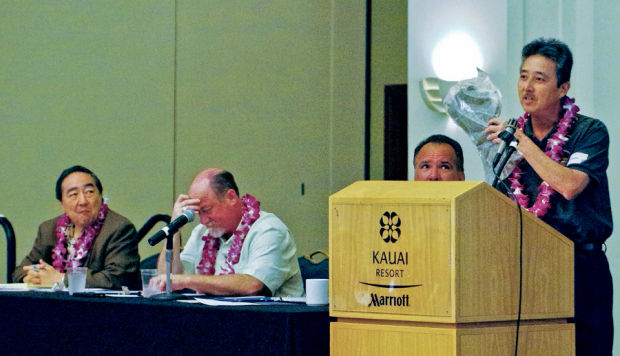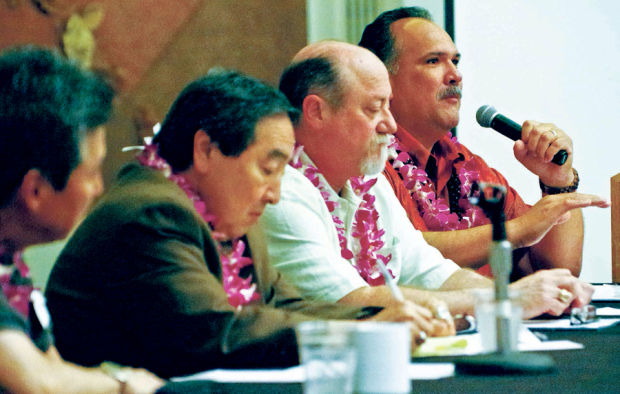LIHUE — The two-day Drug Summit opened on Thursday with a panel presentation on reducing unintended consequences of marijuana policies, and preventing the onset of an industrialized “big marijuana” industry in Hawaii. More than 100 participants representing public safety, education,
LIHUE — The two-day Drug Summit opened on Thursday with a panel presentation on reducing unintended consequences of marijuana policies, and preventing the onset of an industrialized “big marijuana” industry in Hawaii.
More than 100 participants representing public safety, education, health and social services were at Kauai Marriott Resort for the event sponsored by Life’s Choices Kauai, with the Coalition for a Drug-Free Hawaii and Smart Approaches to Marijuana.
John Redman, executive director of Californians for Drug-Free Youth and a member of SAM’s national team, said his intent is not to vilify marijuana, but to encourage a real discussion of unintended consequences before reforms or legalization is considered.
“We are really pleased after talking to legislators to see that Hawaii is taking a very careful and cautious look,” Redman said. “That is difficult for them because they are getting such political pressure from people that want to legalize it and form a commercial industry here. I think that would be devastating to your islands.”
Keith Kamita, Chief Special Agent of Narcotics Enforcement Division at the state Department of Public Safety, said what is on the street is no longer a natural weed in most cases, but a designer product that is dangerous, sometimes more than 90 percent THC.
Kamita said there were more than 60 marijuana-related bills introduced this past legislative session. Only four have moved through committees and are still being considered.
A bill would delete a provision requiring that only the primary care physician can recommend the medical use of marijuana. Another would add board certified pain specialist physicians, oncologists, ophthalmologists and board certified palliative care physicians to the list of medical professionals allowed to recommend a medical marijuana card.
Another would void a rental agreement provision that allows for eviction of a tenant with a valid medical marijuana card. The exceptions would be if an eviction for smoking tobacco is in the agreement, or if the property is a condominium or planned community association that prohibits medical marijuana.
Two House Resolutions would establish a statewide medical marijuana task force to look at issues including dispensaries. There were six bills for legalization or regulation of recreational marijuana that did not pass committees.
“Decriminalization is dead, and legalization is dead, but we still have the resolutions,” Kamita said.
Redman said people need to look at the states where legalization has occurred to see what is happening. Look at marijuana issues from a science-based perspective and step away from the extreme representations of the emotional and political arguments, he said.
For Redman, the medical marijuana question should be resolved by taking the medical properties to create pharmaceutical grade drugs for people to access at that level. Criminal justice reforms need to address the stigma of arrest for small amounts.
Colorado and California were not legalized overnight, he said. It came after decades of working with decriminalization and medical marijuana permitting.
In the end, the industrialization of marijuana is mirroring the approach of the tobacco industry, Redman said. They aim for the young, the poor and minority communities, the groups that historically cannot afford addiction treatment and keep buying the products.
“Eighty percent of the profits of these industries are made by 20 percent of the users,” he said. “They are making money off of the addicted.”
Redman referred to the National Institute on Drug Abuse study, where participants who used cannabis heavily in their teens and continued through adulthood showed an 8-point drop in their IQ between the ages of 13 and 38. Research has also shown that marijuana use can affect memory, judgment, and perception.



